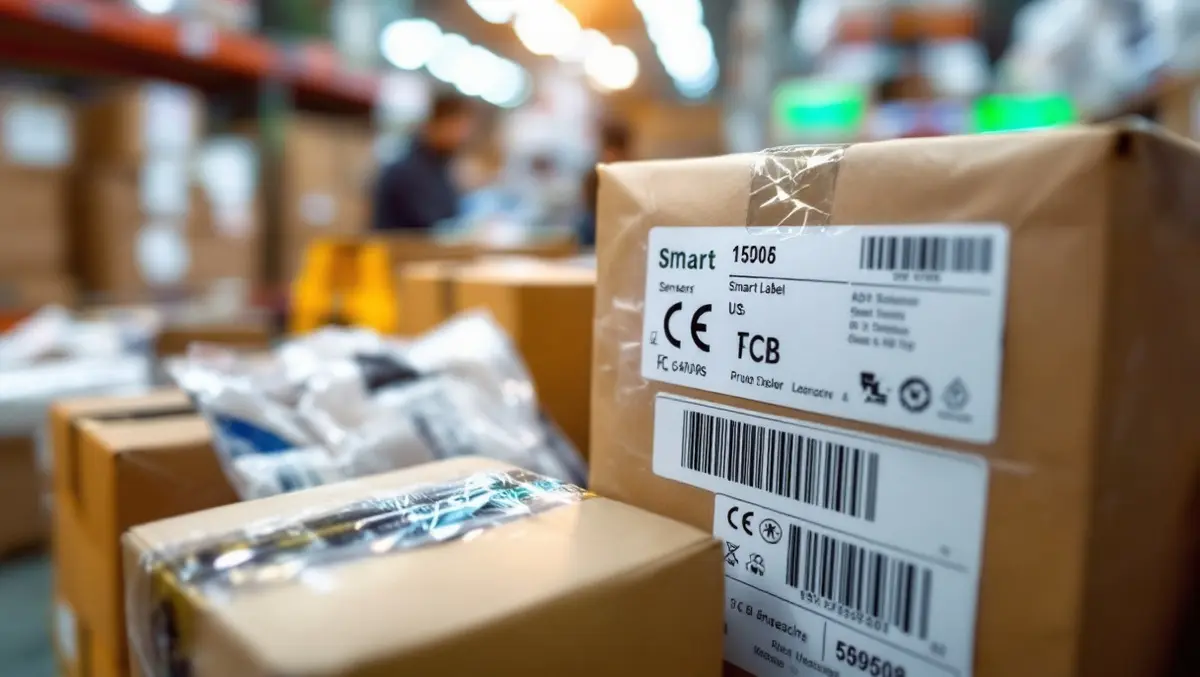International trade has become increasingly complex of late, with increasing legislation, customs charges and compliance adding to the complexity of importing and exporting goods.
But how is technology helping international exports and imports? And what role can smart labels play in facilitating the process?
Technology supporting the import process
The global supply chain has had its share of issues over recent years with disruptions stemming from the pandemic, geopolitical tensions, seasonality and severe weather events. As a result of these and to avoid history repeating itself, companies across the supply chain have invested, to varying degrees, in technologies that can provide both visibility on the availability of components and the location of imported goods in transit.
Such technologies include RFID & Barcode Scanning devices to track and identify goods quickly, IoT, Geolocation and GPS technology to track shipments in real time, AI and machine learning platforms for use in risk assessment and detection of unusual traffic, digital customs to speed up customs clearance and compliance verification. Platforms with designed to source intelligence (DSI) also offer data on where to source individual components that match the technical and geographic needs of new products. A relative newcomer to the list of import technologies and one that promises to bring significant gains to the sector, however, is the smart label.
How smart labels can facilitate the import process
Smart labels are beginning to see traction across vertical sectors. Data from Precedence Research projects the market will expand at a CAGR or 16.4% from $14.10bn in 2024 to $64.42bn by 2034.
Smart labels essentially turn any shipment into an IoT device. Small, credit-card-sized labels activate instantly when peeled and applied to an item, requiring no extra infrastructure or maintenance and have a battery life of 6-12 months. They use motion sensors that detect movement and acceleration and are underpinned by GPS accuracy. Certified for air travel, equipped with sensors for tamper protection, automated proof of delivery and a temperature monitor to ensure the integrity of perishable goods, smart labels provide a comprehensive solution for end-to-end monitoring of assets in transit.
Critically, smart labels provide importers with an accurate log of where the goods attached to them have arrived from; offering a trusted means of proving where their goods have originated and any international stops the goods may have made on the way.
Empowering use of shared data
The data captured by Smart labels can be shared with or accessed by multiple parties which in the context of verifying the origins of goods is an important benefit. In many data-driven organisations, information often exists in isolated silos across various departments and processes, preventing teams from accessing data simultaneously and collaborating effectively.
For example, a logistics firm in the United States may use a completely different dataset than one of its European counterparts. However, with the integration of smart labels, shared platforms have transformed the way businesses operate. Data is no longer confined to individual systems but can now be collected, shared, and accessed across connected devices. This shift not only helps organisations to pinpoint delivery problems more accurately, but improve accountability, and make informed decisions that enhance overall efficiency. Moreover, access to a shared platform is vital for companies importing goods, enabling them to offer real-time data to border officials as the goods are brought into the country.
The future of smart labels
Today smart labels are used by individual exporters or importers for their specific business needs. This means that within a supply chain scenario, there could be numerous smart labels on despatched items, each reporting data to an individual player (such as an Enterprise shipping expensive parts that's needed to manufacture cars) responsible for the goods for a particular part of their transit. However, as the use of smart labels becomes increasingly widespread, stakeholders across the supply chain would stand to gain even more from smart label technology if they could share access to a single smart label across the ecosystem. This would provide a more sustainable solution and a single source of data highlighting the status of materials from source through to processing and manufacturing to border control.
Additionally, with smart labels, you now have complete oversight of your goods. If your shipping company reports that your parcel is on Flight XYZ at 10:30 AM, but your label indicates the flight departed at 10:35 AM without your items, you will be informed immediately. You can also accurately locate that valuable box, worth tens of thousands of Euros, directly on the tarmac.
For today, as the international imports market undergoes major changes and companies grapple to stay compliant with evolving regulations, smart labels provide an accurate, cost-effective solution that prove where their assets originated and have transited through, offering peace of mind as to the location of goods and compliance with international legislation.


